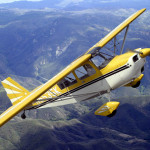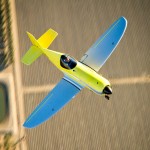The stick-and-rudder skill deficiencies in today’s pilots didn’t start today. It began years ago when they were learning how to fly. Fixing it will require a journey into the past. It’s time to get back to basics, and you won’t cover all the bases unless spin training is a central part of the mix. Read more →
Category: Safety

Acceptable Risk
Dutch pilot Jaap Rademaker recently landed his Foxbat A-22 on the deck of a new kind of cargo ship which features a completely flat top deck. The resulting video has been making the rounds on the internet, and was recently picked up by AOPA. From the comments posted therein, the prevailing opinion seems to be that Rademaker’s landing was an ill-conceived stunt by a low-time pilot with poor judgement. I say it ain’t necessarily so. Read more →

Stick & Rudder Skills Are Important
A highly experienced airline captain and ERAU aviation professor has opined that automation management skills should be receiving more focus than basic stick-and-rudder aptitude. Wanna guess what I think of that idea? Read more →

“Unable”: Your Ace in the Hole
Father may always know best, but air traffic controllers don’t. Yet 14 CFR 91.123 requires compliance with all ATC instructions. So when you’re asked to do something kooky, what do you do? Read more →

See & Avoid: Does It Work?
Collision avoidance is a deadly serious topic. The FAA considers “see and avoid” an adequate level of safety for most of us. I disagree, and here’s why. Read more →

Multi-Pilot Crews in Phase One Flight Testing
The FAA may begin allowing non-required crew to fly on Phase One test fights. I think this might be a bad idea… and I’m strongly in favor of allowing it. A contradiction, you say? Not at all… Read more →

Circle-to-Land Complications
The FAA is adding new circling radii for some (but not all) approaches. Sounds good on paper, but I can foresee some unintended consequences that might not be too pleasant. Read more →

Judgment: Knowing When to Say When
Flying is less about physical aircraft control than it is about good judgment. Unfortunately, many of the situations we face as aviators are not cut-and-dried. We’ll all get along a lot better if we can remember that. Read more →

Getting Better: Simulators for General Aviation
Most of the big technological advances in flying have been in the instrument panel. But now they’re starting to make serious strides in the area of flight simulation, and GA stands to reap a huge benefit. Read more →

Speed-to-Fly
Speed-to-fly is a concept traditionally limited to the glider pilots. But the physics apply to all aircraft, and with the advent of computer technology in the cockpit, it’s possible to augment the traditional “best glide” speed and truly maximize our engine-out performance. Read more →
